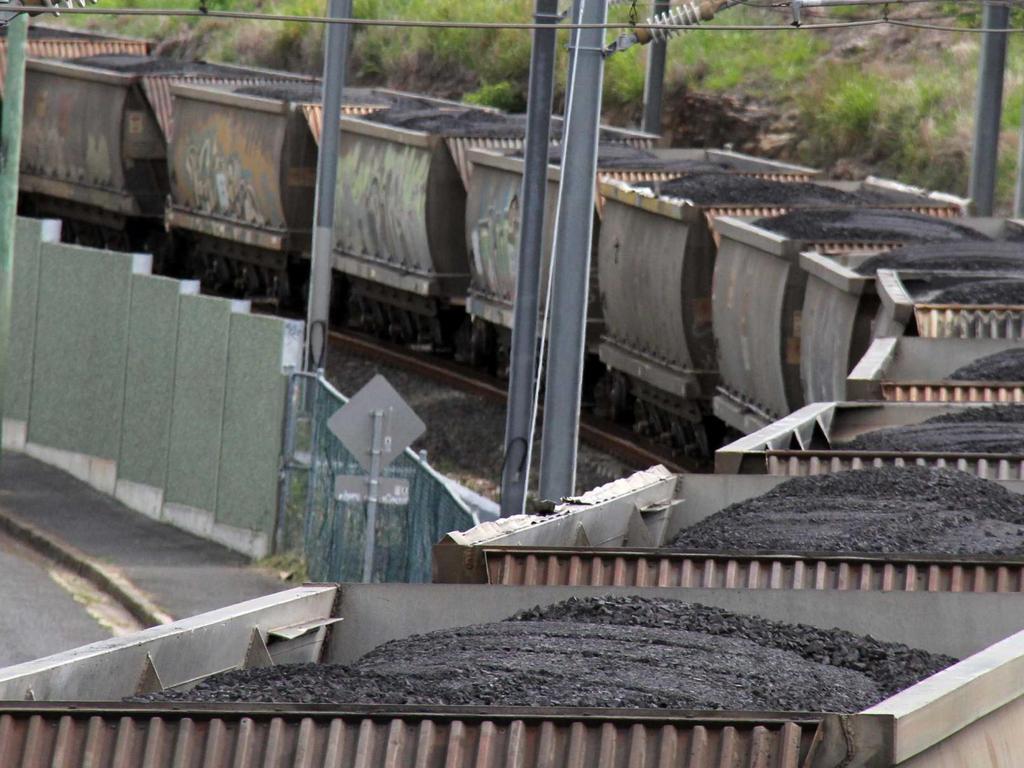Ninety-five per cent of coal must stay in ground by 2050 to keep global warming to 1.5C
Ninety-five per cent of Australia’s coal must stay in the ground by 2050 to have a 50/50 chance of keeping future global warming to 1.5C, new modelling concludes.

Ninety-five per cent of Australia’s coal must stay in the ground by 2050 in order to have a 50/50 chance of keeping future global warming to 1.5C, new modelling published in Nature concludes.
The study, led by researchers from University College London, found nearly 60 per cent of current oil and fossil methane gas and 90 per cent of coal reserves must stay in the ground by 2050 to meet the more ambitious Paris Agreement target.
The release of the modelling, ahead of the Glasgow COP26 climate summit in November, comes amid increasing pressure on Australia’s coal industry.
The UN this week called on Australia to end coalmining and find new jobs for workers within 10 years.
A detailed fossil fuel “non-proliferation treaty” has been drawn up that organisers want to be a complementary mechanism to the Paris Agreement.
British Prime Minister Boris Johnson has said ending coal was a priority for COP26. “We want the developed world to kick the coal habit entirely by 2030 and the developing world by 2040”, he said in response to the IPCC’s updated report into the science of climate change.
China is refusing demands to detail its plans to cut emissions. Beijing, in recent days, has rebuffed attempts by the US and Britain to encourage the world’s biggest emitter, responsible for 27 per cent of global emissions, to do more and give greater detail on how it intends to peak emissions by 2030 and be net carbon neutral by 2060.
China has been criticised for stepping up development of coal-fired power stations at home and financing construction of new coal power stations abroad.
China has told Britain and the US it will not yield to international pressure to improve its commitments.

The latest refusal came after Alok Sharma, Britain’s climate change representative, arrived for pre-summit talks in China on Tuesday.
Despite the rebukes, a campaign is building to make a phase-out of coal a headline achievement at the Glasgow summit.
The new research published by Nature reads: “Central to pushing this transition forwards will be the domestic policy measures required to both restrict production and reduce demand.”
It said the development of international initiatives, such as the proposed non-proliferation treaty on fossil fuels, were also key as they could serve to foster global action, as could existing frameworks such as the UN Convention on Climate Change.
Matthew England, an oceanographer and climate scientist at UNSW, said “the results of the study are unambiguous – ongoing fossil fuel extraction and burning will deny us any chance of a safe climate future.”
Mark Howden, the director of the Australian National University’s Institute for Climate, Energy and Disaster Solutions, said the findings of the new study were “not great for Australian coalmining companies”.
A proposed non-proliferation plan, backed by thousands of international groups and local governments including Sydney and Melbourne, outlined a proposal to end coal production in wealthy countries.
Details of the proposed treaty were published by Peter Newell and Andrew Simms from University of Sussex in the journal Climate Policy in 2020.
Among the thousands of other supporters are palaeontologist Tim Flannery and former Greens leader Christine Milne.
Under the non-proliferation treaty, the US, Australia and Germany have been identified as the “first movers” to stop production.
The next group is Russia and Poland, both described as “upper-middle-income countries with a long history of high carbon emissions.” After them come China and South Africa, followed by Indonesia and India.
The Nature article builds on earlier work assessing what was needed to meet a 2C target. The 2015 research, also published in Nature, estimated that a third of oil reserves, half of gas reserves and more than 80 per cent of coal reserves should remain unused by 2050 to have a good chance of capping global warming at 2C.
The newer modelling found the lower 1.5C threshold would require a quicker phase-out of oil and gas and an almost complete closure of coal.
The research said oil and gas production must decline by 3 per cent annually until 2050 to meet the more ambitious goal.
“Policies to restrict production and reduce demand will be needed to encourage producers to reassess production,” the Nature article says, adding that the need to forgo future production means “country producers, fossil energy companies and their investors need to seriously reassess their production outlooks”.
“This is particularly true for countries fiscally reliant on fossil fuels, to allow for a managed diversification of their economies,” it reads.
“Many regions are facing peak production now or over the next decade, and the development of new low-carbon sectors of their economies that will provide employment and revenues will therefore be key.”
It called on national governments to force action.






